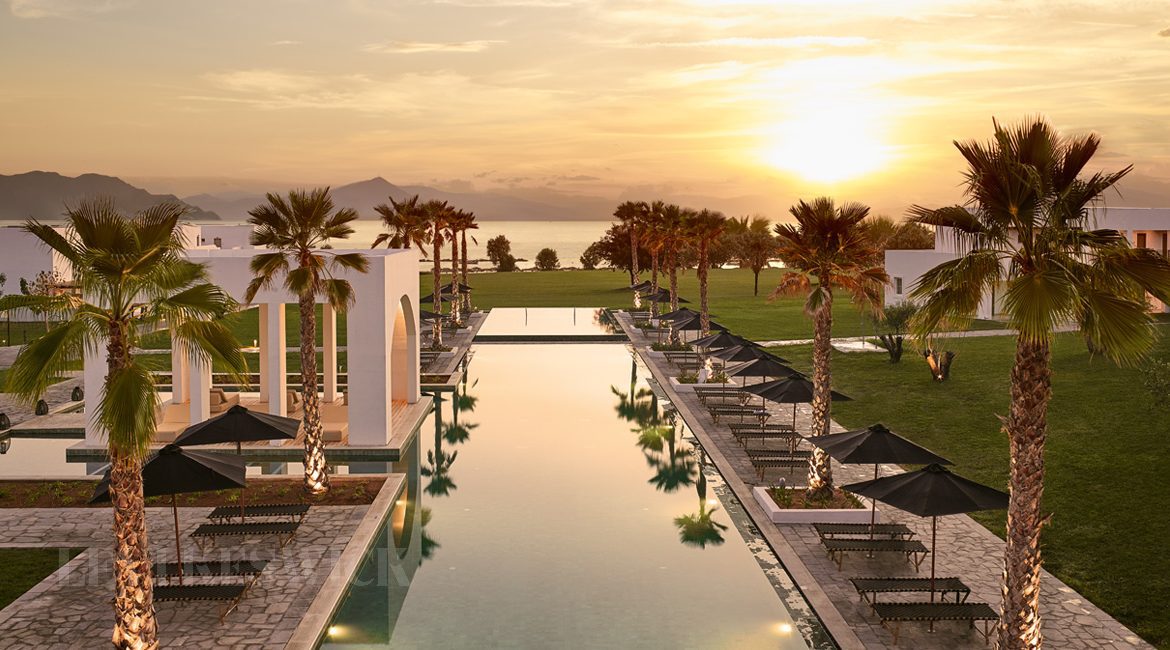Defined by clean lines and an overall uncluttered aesthetic, modern landscaping is the organic embodiment of “less is more.”
Perfect for contemporary property layouts or as a welcome contrast against a more traditional home structure, the modern landscape is one that strives for symmetry and balance above all else.
Beyond a Built-in Sense of Balance
Unlike conventional landscaping plans, modern design affords few opportunities for the chaos of nature, instead favoring a design regimen that is almost theatrical in its adherence to order, and organized chaos- the layout, plantings, structure, and outfitting are all part of a rehearsed harmony that is more than just eye pleasing; it is harmonious.
The opposite of natural, this formal planting plan eschews ornamental plants in favor of an alluring landscape that employs structure and attention to detail in lieu of naturalistic and random placement of plants.
This is not to say, however, that the modern landscape is bereft of natural elements. The concept of balance continues into the modern era in the form of the fantastic, eclectic, and organic, taking the form of existing, trees, foliage of all varieties, artistic stonework, natural-fiber hardscaping, and plants fit for the modern theme, from tulips to succulents. It is the inclusion of these natural pieces that often separates the modern design from its contemporary counterpart.
Crystal Clear Attributes
The modern landscape has many characteristics that encompass its overall style, but two major components round out the modus operandi of this design.
Symmetry and Natural Balance
As discussed above, symmetry and balance is a governing tenet of modern landscaping. While plantings may not be in straight lines or in four equal quadrants, they are certainly reliant on this design principle to create the look that defines modern landscaping. The landscape is often symmetrical, as in both traditional and modern Japanese-style landscapes, but balance is more than just matching equal pairs of plants. Balance is achieved when all aspects of the modern landscape enhance one another, and in an overall sense, this design philosophy does just that.
Formal Design Structure
The formal structure of modern landscaping is often reflected in the overall shape of the property. Rectangular shapes are common, as are designs that follow the swath of the land, upended on one end. This is because modern land scaping has evolved away from the more organic naturalistic designs, preferring a more symmetrical and proportional presentation of the exterior, whether it be the drive way, front walkway, and yard or the back patio, pool, and deck.
A Look to the Past
While it might seem like the essence of modern landscaping is forward thinking, it is still rooted in an appreciation of the past. This is evident in the overall goal of the design- a clear balance of modern form and traditional function.
It should be noted that a formally-structured landscape does not have to be modern in the sense of form, if the design is traditional and old-fashioned in the sense of function. In this case, the modern landscape blends well those classic, romantic lines while still having the structure needed to keep it safe and functional. It is these attributes that make modern landscaping a flexible and widely adapted landscape design, able to address the unique needs of any property, from small studio apartments to high-rise condos, sizable single-family homes to expansive country estates.
It is important to note that while this is an excellent example of a landscape done exceptionally well, it is still just one example. The possibilities are endless for the look and feel that might be most appropriate for your own property.
In addition to the type of overall look that you ultimately favor, there are countless secondary components that will affect your landscape design as well.
Common considerations include:
- The overall look and feel
- The amount and type of natural vs. man-made elements
- The type of hardscaping included, whether it is made of natural stone, concrete, brick, cobblestones, or something else entirely
- The type and amount of plants used, driven both by the depth of your pockets and what types of plants are native to your particular zone
- The type of soil and growing conditions on your property
A modern landscape, then, is a flexible environment, one that is based on a formal layout that allows for the inclusion of any number of natural elements and only requires that the subordinate pieces be respectful to the more dominant style. Whether you prefer a more symmetrical or more natural style, you have the option of choosing between a number of plants, hardscaping materials, ground coverings, and details that will work with your modern landscape design, the most important point being to have fun with all of it!
Whether using the basics as your starting point or beginning with a blank slate and then adding elements one at a time, you are well on your way to setting up a successful modern landscape. Whatever your end result, though, make sure to enjoy all the beauty and intrigue that your modern garden offers.
You should be proud of the work you have put into your terrain for some time to come. It’s 100% worth it.








